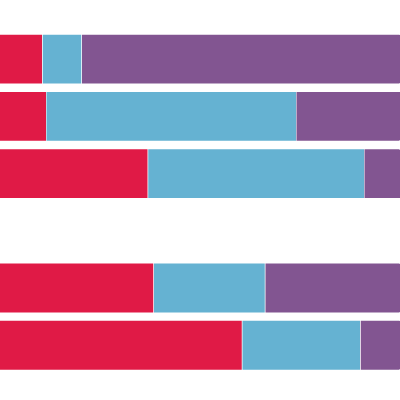Households experiencing one or more housing problems by tenure
26 April 2023

Key points
- Of all households with at least one housing problem, 32% are private rented, 27% social rented and 41% are owner-occupied.
- Only households in the private and social rented sectors experience all three housing problems of affordability, overcrowding and non-decency.
Problems with people’s homes – non-decent homes, overcrowding and unaffordable costs – can influence their health. Non-decent homes include problems such as damp and cold, which can directly harm health. Overcrowding and poor affordability can cause stress and influence mental health. If someone experiences more than one of these problems, this risks further harm to their health.
This chart shows the proportion of households in each tenure that experienced one or more housing problems in England in 2018/19.
Owner-occupied housing still makes up the majority of households in England, at around 64%, However, owner-occupied homes account for 50% of non-decent homes, and only 12% of all households with multiple housing problems.
The percentage of households experiencing at least one housing problem is split fairly evenly across different tenures:
- private rented (32%)
- social rented (27%)
- owner-occupied (41%).
However, those households experiencing multiple housing problems are mostly in social and private rented homes. Private and social rented households are the only types of tenure to experience all three problems of non-decent, overcrowded and unaffordable housing. Roughly two-thirds of these are private rented households.
Many households in England experience one housing problem, but around one million households with more than one risk to a person’s health could be prioritised for intervention. Overcrowded households are the most likely to experience additional problems.
- Non-decent homes are defined as those with a Category 1 hazard – as assessed by the Housing Health and Safety Rating System (HHSRS) – that are not in a reasonable state of repair, lack reasonably modern facilities or are not warm enough (do not provide a reasonable degree of thermal comfort).
- Overcrowding is measured by comparing household members against a bedroom standard. This standard allows for the number of rooms a household needs, based on the relationship status of adults in the household, and the age and sex of the children.
- Unaffordable housing is where more than a third (33%) of household income (net housing benefit) is spent on housing costs.
Source: Ministry of Housing, Communities & Local Government, English Housing Survey 2019: Housing Stock Data, 2022







